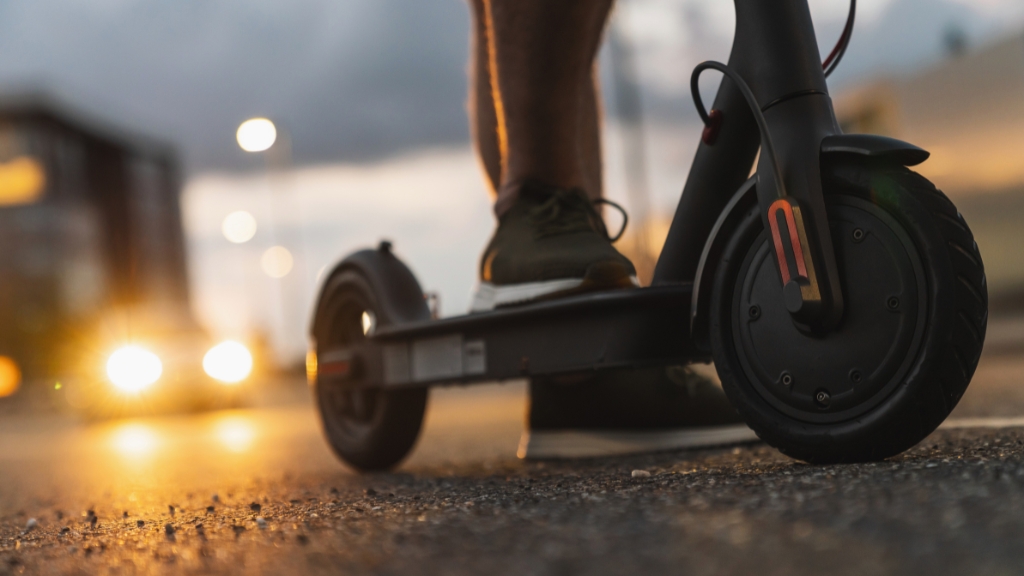The legal age to drive an e-scooter in the United States varies by state but typically ranges between 14 and 16 years old.
In most states, riders must be at least 16 years old to legally operate an electric scooter on public roads, though some states permit operation at age 14 under certain conditions.
A small number of jurisdictions have no formal age restriction but require a valid driver’s license or learner’s permit.
According to recent surveys by the National Association of City Transportation Officials (NACTO), more than 280 cities across the U.S. have adopted e-scooter regulations, and the age minimum is among the most standardized provisions nationwide.
However, these age laws often interact with helmet mandates, speed caps, licensing rules, and local traffic codes, meaning the legality of operating an e-scooter as a minor can be complex depending on where you ride.
The Popularity of E-Scooters is Growing Fast in the US
8 years into America’s e-scooter experiment, what have we learned? https://t.co/8E1NfYYsU9
— Island Press (@IslandPress) April 15, 2024
E-scooters are no longer just trendy urban novelties. In 2024 alone, Americans took more than 140 million trips on shared micromobility devices like e-scooters, according to NACTO. This marks a near return to pre-pandemic levels when ridership peaked in 2019 at 136 million trips.
Cities across the country, from Austin and Atlanta to Seattle and San Diego, have embraced e-scooters as a solution to “last-mile” transportation needs. The U.S. Department of Transportation estimates that 45% of car trips in cities are under 3 miles, a distance easily covered by an e-scooter.
But this rapid growth also comes with growing pains. Lawmakers are still catching up with how to regulate electric scooters, especially around who is allowed to ride them. State laws vary widely, and many local governments have added their ordinances regarding helmet use, where scooters may operate, and, yes, how old you have to be to ride one.
State-by-State Legal Age Requirements for E-Scooters
| State | Minimum Legal Age | Helmet Required Under Age | License or Permit Needed? |
| California | 16 | Yes (under 18) | No |
| Florida | 16 | No | No |
| Texas | No set age (local rules apply) | No | No |
| New York | 16 (NYC: 18) | Yes (under 18) | No |
| Massachusetts | 16 | Yes (mandatory) | Yes, for scooters over 2 HP |
| Washington | 16 | No | No |
| Illinois | 16 (Chicago: 18) | Yes (under 17) | No |
| Georgia | No set age (typically 15+) | No | No |
| Pennsylvania | 16 (pilot program) | Yes (under 18) | Yes (class C license) |
| Oregon | 16 | Yes (under 16 prohibited) | No |
As seen in the table above, the most common minimum legal age to ride an e-scooter is 16, often with helmet mandates for minors. A handful of cities like Chicago and New York City have pushed the age up to 18 for shared e-scooters, though private ownership laws can differ.
Why Are Age Restrictions in Place?

E-scooters are small, nimble, and deceptively simple to operate. But they also introduce unique safety risks, particularly for younger riders who may lack road experience.
According to the Centers for Disease Control and Prevention (CDC), emergency rooms in the U.S. treated more than 45,000 scooter-related injuries in 2023. More than one-third of those injured were between the ages of 10 and 19.
Younger riders are more likely to suffer severe injuries in falls and collisions because they often skip helmets and ride in unsafe areas like sidewalks or busy streets. The American Academy of Pediatrics recommends restricting e-scooter use to ages 16 and above, citing the need for basic traffic awareness and physical coordination.
Age restrictions are also tied to insurance and liability. In some states like Massachusetts, e-scooters that exceed certain speed thresholds or motor wattages are classified similarly to mopeds, requiring a valid license and vehicle registration.
Under Massachusetts law, riders must be at least 16 years old, wear a helmet at all times, and may only operate scooters with a motor under 750 watts unless licensed as a motor vehicle.
A Comparison With Motorcycles: Age and Risk
While electric scooters are far slower and less powerful than motorcycles, regulators often reference motorcycle accident statistics when setting safety rules. This is especially relevant in states like Massachusetts, where both vehicle types fall under the broader micromobility category.
According to the National Highway Traffic Safety Administration (NHTSA), motorcycles represent just 4% of all registered vehicles in the U.S., yet they account for more than 14% of all traffic fatalities. In 2016 alone, 5,286 of the 37,461 total traffic deaths nationwide involved motorcyclists or passengers.
In Massachusetts, the year 2016 saw 2,017 motorcycle crashes, leading to 1,635 serious injuries and 42 fatalities. In nearly 30% of all motorcycle accidents, alcohol was a factor, and motorcyclists had a 36% higher death risk than drivers of passenger vehicles.
While e-scooters are not nearly as fast, the exposed rider position and lack of impact protection create similar risk profiles for severe injury, particularly when riders are underage or untrained.
While electric scooters are far slower and less powerful than motorcycles, many state lawmakers reference motorcycle crash data when shaping micromobility laws, including age requirements. This is particularly relevant in states like Massachusetts, where regulators have long monitored the high fatality and injury rates among motorcycle users.
According to Boston motorcycle accident statistics, the city has seen thousands of crashes involving motorcycles over the past decade, with some intersections consistently flagged as high-risk zones for both riders and pedestrians.
What Happens If a Minor Rides Illegally?
Riding an e-scooter below the legal age can result in:
- Fines for both the rider and their guardian
- Confiscation of the scooter in some cities
- Ineligibility for insurance claims in case of an accident
- Criminal liability if the rider causes injury or property damage
In states where licensing is required for specific classes of scooters, operating without one could also mean points on a driving record or a suspended learner’s permit. While enforcement is often lax, the consequences become very real in the event of a crash or police stop.
Helmet Laws, Speed Limits, and Local Rules
View this post on Instagram
Age is just one piece of the puzzle. Most states combine age requirements with helmet laws and speed limits to manage e-scooter safety.
For instance, California requires helmets for riders under 18, even on scooters with speed limits capped at 15 mph. Massachusetts mandates helmets for all riders, regardless of age, and imposes a maximum speed of 20 mph on electric scooters.
New York City, in contrast, allows adult riders to forgo helmets but requires shared scooter users to be 18 or older.
Cities like Denver, Colorado, and Portland, Oregon, have also established geo-fenced slow zones, where scooters automatically reduce their top speed near schools or pedestrian-heavy corridors.
Tips for Young Riders (And Their Parents)
If you’re a teenager or the parent of one, thinking about hopping on an e-scooter, it’s important to remember that just because a scooter is small doesn’t mean it’s a toy.
Micromobility devices operate on real roads, among real traffic, and require the same kind of judgment and responsibility as driving a car or riding a bike.
Parents should ensure that their children:
- Know the local age law
- Always wear a helmet
- Avoid busy roads and night riding
- Use bike lanes where possible
- Understand hand signals and basic traffic rules
Even in cities where the age limit is 14, parents can still set household rules and supervise rides. Many scooter-sharing apps also include built-in age verification and GPS restrictions that limit usage near sensitive areas like schools, government buildings, or highways.
Conclusion
@h0lgiisa #relatable #escooter #nocars #nolicense #fyppp #blowup? #foryoupagee #funnytiktok ♬ SportsCenter – BossMan Dlow
Electric scooters have revolutionized short-distance travel in cities, offering an affordable and eco-friendly alternative to driving. But they’re not risk-free, and lawmakers have responded by setting minimum age laws to help protect younger riders.
While the standard age across most of the U.S. is 16, some cities and states allow 14-year-olds to ride, and others restrict access until age 18. With safety features, helmet laws, and common-sense riding habits, e-scooters can remain both practical and safe.
The key is knowing your rights, responsibilities, and the local regulations where you ride.


